In the avian world, a fascinating phenomenon unfolds when small birds fearlessly take on much larger predators.
It is not uncommon to witness small birds engaging in daring pursuits, swooping and diving at hawks with unwavering determination. Such a sight that can leave one in awe, as seemingly delicate and diminutive creatures fearlessly challenge their formidable aerial predators.
This intriguing behavior raises the question: why do small birds chase hawks? What drives these seemingly fearless creatures to confront such formidable adversaries?
In this article, we will explore the reasons behind this audacious behavior, shedding light on the motivations and strategies of small birds as they engage in these daring encounters with hawks.
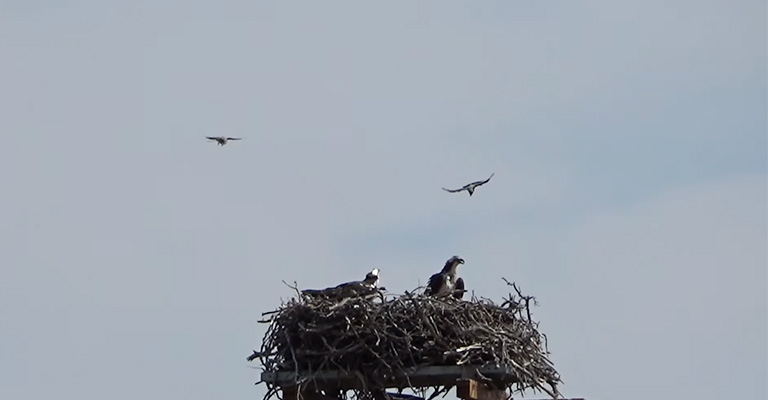
Why Do Small Birds, Chase Hawks?
Small birds chase hawks for various reasons, including defense of territory, protection of offspring, mobbing behavior, safety in numbers, distraction displays, aggression and territoriality, alarm calls, exploiting the hawk’s weaknesses, and learning from experience.
These behaviors help small birds increase their chances of survival and protect their nests and young from potential predators. Small birds often chase hawks for several reasons:
Defense of Territory
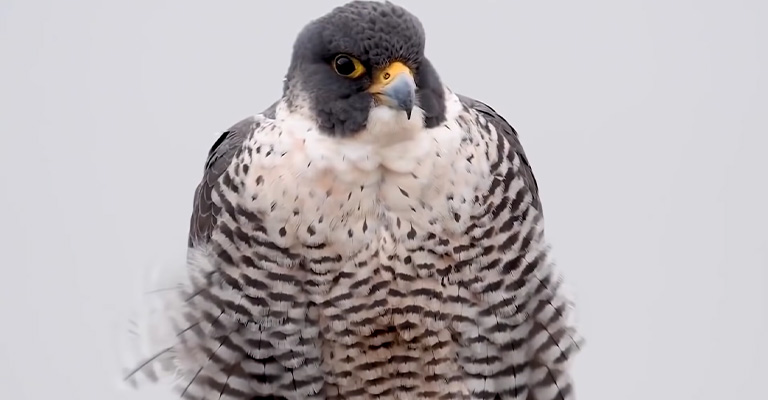
Small birds are territorial and will defend their nesting sites and feeding areas from potential threats like hawks.
Protection of Offspring
Hawks are known predators, and small birds will aggressively chase them away to protect their vulnerable chicks or eggs.
Mobbing Behavior
Small birds engage in mobbing behavior, where they gather in groups to harass and intimidate predators. This behavior is seen as a collective defense mechanism.
Safety in Numbers
By mobbing hawks, small birds increase their chances of survival. The combined effort of multiple birds can deter or confuse the hawk, making it less likely to attack.
Distraction Display
Small birds may engage in distraction displays to divert the hawk’s attention away from their nests or young. They may feign injury or fly in erratic patterns to draw the predator away.
Aggression and Territoriality
Small birds are known for their aggressive nature, and they will fiercely defend their territory against any potential threats, including hawks.
Alarm Calls
Small birds have distinct alarm calls that they use to alert others of potential danger. When a hawk is spotted, these alarm calls can trigger a response from nearby birds, leading to a collective chase.
Exploiting the Hawk’s Weaknesses
Small birds are agile and quick, whereas hawks are larger and slower in flight. By chasing hawks, small birds exploit this advantage and try to exhaust or outmaneuver the predator.
Learning from Experience
Small birds may have learned through experience that mobbing or chasing hawks is an effective strategy. Over time, this behavior becomes ingrained in their instincts and is passed down through generations.
Examples of Little Birds Chasing Hawks
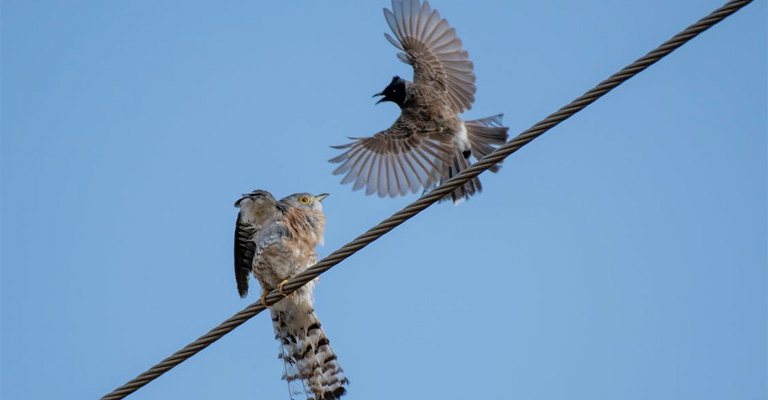
Many species, including robins, sparrows, warblers, and finches, chase hawks when faced with a hawk threat. Here are a few examples-
American Robins
American Robins are known to chase hawks, especially during the breeding season. They will aggressively mob hawks, flying around them, and even dive-bombing them to drive them away from their nesting territories.
Eastern Bluebirds
Eastern Bluebirds are small, colorful birds that are territorial and protective of their nests. They will actively chase hawks, swooping and diving at them while emitting alarm calls to alert other birds in the area.
Black-capped Chickadees
These small, energetic birds are known for their boldness. When they spot a hawk, they will gather in groups and engage in mobbing behavior. They will fly around the hawk, making loud alarm calls and sometimes even pecking at it.
House Sparrows
House Sparrows are highly adaptable and social birds. When they encounter a hawk in their territory, they will gather in large numbers and mob the predator. They will fly around the hawk, making a lot of noise and attempting to intimidate it.
European Starlings
European Starlings are highly gregarious birds that form large flocks. When a hawk is spotted, they will gather together and engage in mobbing behavior. They will fly around the hawk, dive at it, and emit loud alarm calls.
Tree Swallows
Tree Swallows are agile flyers and fiercely protective of their nesting sites. When a hawk approaches their territory, they will chase it, flying in close proximity and making rapid, acrobatic maneuvers to deter the predator.
Barn Swallows
Barn Swallows are known for their aerial prowess. When a hawk enters their territory, they will engage in aggressive mobbing behavior. They will swoop and dive at the hawk, sometimes even making physical contact, to drive it away.
American Goldfinches
American Goldfinches are small, bright yellow birds that are often seen in flocks. When a hawk is spotted, they will gather together and chase it, flying in a coordinated manner and emitting high-pitched alarm calls.
House Wrens
House Wrens are small, energetic birds that are known for their territorial behavior. When a hawk enters their territory, they will actively chase it, flying around it and making loud, scolding calls to deter the predator.
Are Hawks Scared of Small Birds That Chase Them?
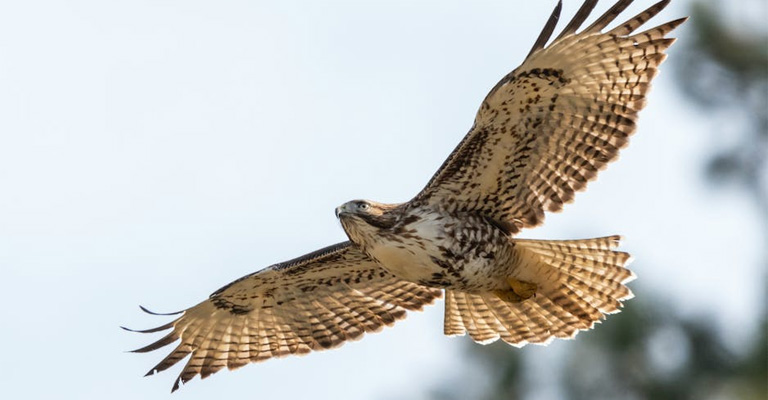
Hawks may not necessarily be scared of small birds that chase them, but they can be deterred or annoyed by their presence. Here are a few reasons why hawks may be affected by small birds chasing them:
Distraction
Small birds that chase hawks can create a distraction and divert the hawk’s attention away from its intended target, such as a nest or potential prey. This can disrupt the hawk’s hunting or territorial activities.
Mobbing Behavior
When small birds gather in groups and engage in mobbing behavior, they can overwhelm the hawk with their numbers and persistent harassment. This can make the hawk uncomfortable and encourage it to leave the area.
Agility and Speed
Small birds are often more agile and maneuverable in flight compared to hawks. By flying around the hawk and making sudden movements, small birds can make it difficult for the larger predator to catch them. This can frustrate the hawk and discourage it from pursuing the chase.
Alarm Calls
Small birds emit alarm calls when they spot a hawk, which can alert other birds in the vicinity. The collective alarm calls can create a cacophony of noise that may startle or unsettle the hawk, making it less inclined to stick around.
Energy Expenditure
Chasing small birds requires energy and effort on the part of the hawk. If the hawk is repeatedly chased by small birds, it may decide that the potential reward (prey or territory) is not worth the energy expenditure and choose to leave the area.
Previous Experiences
Hawks may have learned from previous encounters that small birds can be bothersome and potentially dangerous. If a hawk has experienced aggressive mobbing or harassment from small birds in the past, it may be more inclined to avoid areas where it encounters such behavior.
While hawks are formidable predators, they are not invincible, and they can be influenced by the actions of smaller birds.
However, it’s important to note that the response of hawks to small birds chasing them can vary depending on the species, individual temperament, and specific circumstances.
Why Do Hawks Put Up with Small Birds Chasing Them?
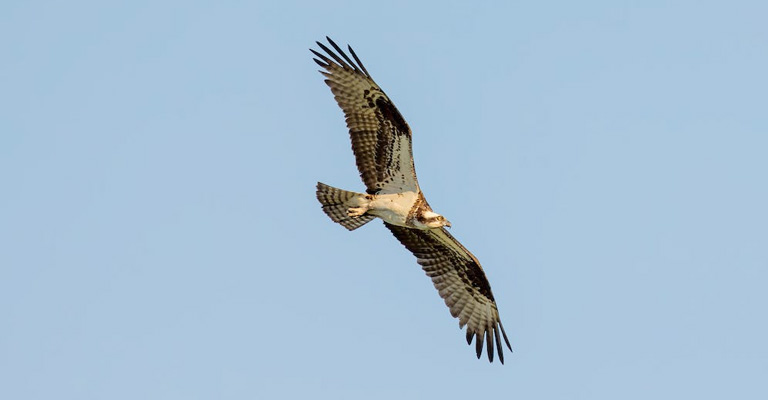
Hawks may tolerate or put up with small birds chasing them for several reasons:
Energy Conservation
Hawks are efficient hunters and prefer to conserve their energy for capturing prey rather than engaging in unnecessary conflicts. If the small birds pose no immediate threat, the hawk may choose to ignore them and continue its hunting activities.
Size Advantage
Hawks are larger and more powerful than small birds. While small birds may harass and annoy hawks, they pose little physical threat. Hawks may perceive the small birds as more of a nuisance than a genuine danger, and therefore, they may not feel the need to retaliate.
Focus on Primary Objectives
Hawks have specific objectives, such as hunting for food or defending their own territory. If the small birds are not directly interfering with these objectives, the hawk may prioritize its primary activities over engaging in a confrontation.
Adaptation to Mobbing Behavior
Hawks are familiar with mobbing behavior from smaller birds and may have developed a tolerance for it.
They may have learned that the small birds are unlikely to cause significant harm and that the best course of action is to endure the harassment until the small birds eventually disperse.
Avoiding Injury
Engaging in a physical confrontation with small birds carries the risk of injury for the hawk. Hawks rely on their strength and agility for hunting, and an injury sustained during a confrontation with small birds could hinder their ability to capture prey effectively.
Habituation
Hawks may become habituated to the presence of small birds and their mobbing behavior. Over time, they may learn that the small birds are not a genuine threat and that their actions are merely a display of territorial or protective behavior.
Avoiding Unnecessary Conflicts
Hawks may have evolved to avoid unnecessary conflicts whenever possible. Engaging in confrontations with small birds may not provide any significant benefit to the hawk, so they may choose to tolerate the behavior rather than escalate the situation.
It’s important to note that while hawks may tolerate small birds chasing them, their response can vary depending on the specific circumstances and individual temperament.
In some cases, hawks may eventually decide to leave the area if the harassment becomes too persistent or disruptive to their activities.
FAQs
Yes, small birds can sometimes succeed in driving away hawks through their mobbing behavior. By gathering in groups, making loud alarm calls, and persistently harassing the hawk, they can create enough disturbance and intimidation to force the hawk to retreat.
While small birds can be aggressive and persistent in their chase, they generally do not pose a significant physical threat to hawks. Hawks are larger, more powerful birds with sharp talons and beaks that can defend themselves if necessary.
Chasing hawks can provide several benefits for small birds. Firstly, it helps to protect their nests and offspring from potential predation. By actively chasing hawks away, small birds reduce the risk of their nests being discovered or their young being attacked.
Small birds are known to engage in mobbing behavior not only against hawks but also against other predators. They may chase and harass owls, falcons, eagles, and even larger mammals like cats or snakes.
Hawks can learn from their experiences and may become more cautious or avoid areas where they have encountered aggressive small birds in the past.
If they consistently face mobbing and harassment from small birds in a particular location, they may associate that area with potential trouble and choose to avoid it.
Final Words
The act of small birds chasing hawks is a remarkable display of bravery and resourcefulness. While it may seem counterintuitive for smaller birds to challenge much larger predators, their actions serve important purposes.
This display of bravery can help maintain the delicate balance of power within their ecosystem, ensuring the survival and prosperity of their species.
By engaging in these pursuits, small birds are defending their territories, protecting their nests and young, and sending a clear message to potential threats.
Through their collective efforts, small birds demonstrate the power of unity and the resilience of nature’s intricate web of interactions.
So, the next time you witness a small bird fearlessly chasing a hawk, take a moment to appreciate the courage and determination that lies within these tiny creatures.